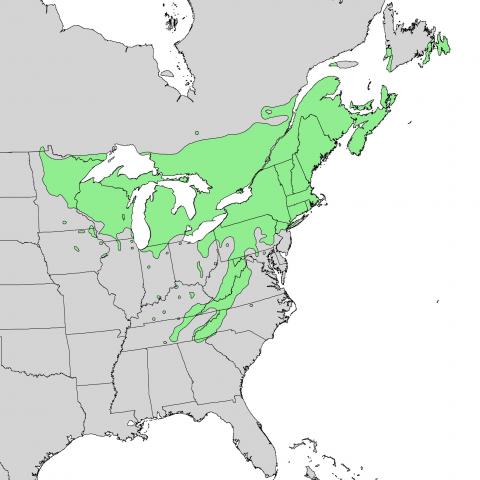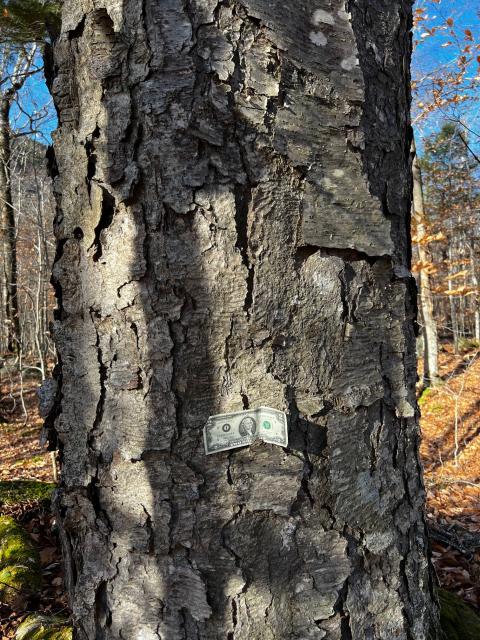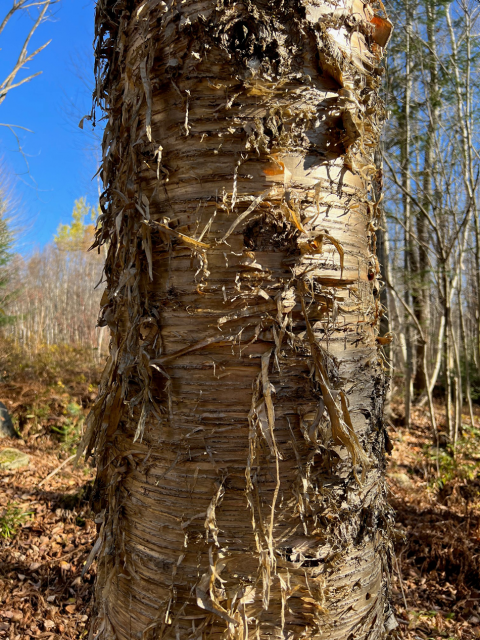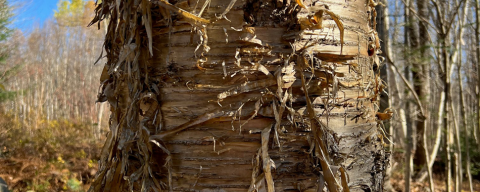Fun Facts about Yellow Birch in New Hampshire
SHARE
- Yellow birch is one of our largest deciduous trees in New Hampshire forests and can grow to be 100 feet tall and 3 feet in diameter at breast height.
- The scientific name of yellow birch is Betula alleghaniensis meaning the Birch Tree of the Allegheny Mountains.
- The common name comes from the distinctive yellow peeling bark on younger trees.
- The yellow birch is the Provincial Tree of Quebec. In French, yellow birch is called “bouleau jaune.” Quebec has about half the entire yellow birch growing stock and provides about half of all the yellow birch lumber in North America.
- The range of yellow birch is from Ontario and Minnesota east to Labrador, all of New England except Cape Cod and the Islands, and south in the Appalachian Mountains to Northeast Georgia (see range photo below)

- Yellow birch is our largest and most valuable birch. The lumber is used for veneer, flooring, cabinets, and fine furniture.
- Yellow birch can live for 150-300 years in old-growth forests, with the oldest known at 387 years old in Algonquin Provincial Park in Ontario. This age came from an actual ring count, and the tree had heart rot beyond 387 years. It is conceivable that yellow birch could reach or exceed 400 years of age. (see old growth photo below).

- Look at the base of the tree where you will find the characteristic yellow bark. Yellow birch over 150 years of age develops thick platy bark that might confuse identification
- The New Hampshire Champion yellow birch is in the Dry River Old Growth Forest in Crawford Notch State Park. It has a 106” circumference at breast height, 80’ vertical height, and a 57’ average crown spread for a New Hampshire Big Tree score of 200 points.
- Young trees less than 1 foot in diameter have horizontal lenticels. Lenticels are a type of pore that allows gas exchange between the inner part of the tree and the atmosphere. (see young tree photo below).

- Young yellow birch trees are very susceptible to forest fires, including low severity fires, because of their thin bark. Abundant yellow birch indicates an absence of forest fires. The Franconia Notch Old Growth Forest is unusual because it has such a high density of yellow birch, indicating an absence of forest fires over hundreds of years.
- Yellow birch twigs have a wintergreen taste from a chemical compound called methyl salicylate. Black birch (Betula lenta) and wintergreen (Gaultheria procumbens) also contain this compound. Historically these and yellow birch were used to distill this chemical compound. Chemists have since created this compound synthetically to flavor certain candies and add to mouthwash and muscle liniments.
- Yellow birch grows well in the transition zone from 2,000-3,000 foot elevations in the White Mountains, where it prefers cool and damp sites on various soils.
- Yellow birch is a mixed stand species in New Hampshire and associated in northern hardwood forests with sugar maple and American beech. Yellow birch is also a component in hemlock and red spruce forests.
- Yellow birch has both a deep tap root and long lateral roots.
- Yellow birch is "Intermediate" in shade tolerance and thus needs a small opening like a canopy gap to create optimum light conditions and exposed mineral soil for seeds to germinate. Yellow birch is the most shade tolerant of all nine NH native birch trees and shrubs.
- Yellow birch starts producing seeds between 30-40 years; optimum seed production is 70 years, with a good crop every 1-4 years.
- Yellow birch trees are monecious, meaning that male and female flowers and catkins are borne separately on the same branch. They flower in May, are wind-pollinated, with the fruit maturing in August, with a heavy seed fall starting in October and lasting all winter. Seeds are on a vertical cone-like structure.
- Seeds are spread by wind and in winter on snow crust for thousands of feet.
- Yellow birch seeds germinating in sugar maple stands cannot penetrate sugar maple leaf litter. Sugar maple roots also produce allelopathic chemicals that hinder yellow birch seedlings from competing. That is why yellow birch often germinates best on stumps, nurse logs, and boulders.
- Moose, deer, and snowshoe hare prefer to browse on yellow birch seedlings and saplings.
- The seeds of yellow birch are sought after by pine siskins, redpolls, goldfinches, chickadees, and ruffed grouse.
- Yellow-bellied sapsuckers favor yellow birch for making summer sap wells. Ruby-throated hummingbirds also use these sap wells.
- Broad-winged hawks prefer yellow birch for nest sites.
- Yellow birch can be tapped but has a much lower sugar content than sugar maple.
- Yellow birch is one of our most valuable trees but is underappreciated by many. Once you learn more about this species it may become your favorite.
How many species of birch are found in New Hampshire?
|
|
Common Name |
Scientific Name |
Tree |
Shrub |
Remarks |
|
1 |
Yellow Birch |
Betula alleghaniensis |
x |
|
|
|
2 |
White Birch |
Betula papyrifera |
x |
|
NH State Tree |
|
3 |
Gray Birch |
Betula populifolia |
x |
|
|
|
4 |
Black Birch |
Betula lenta |
x |
|
|
|
5 |
River Birch |
Betula nigra |
x |
|
|
|
6 |
Heart-Leaf Birch |
Betula cordifolia |
x |
|
Montane |
|
7 |
Bog Birch |
Betula pumila |
|
x |
Bog |
|
8 |
Dwarf Birch |
Betula glandulosa |
|
x |
Alpine |
|
9 |
Small Birch |
Betula minor |
|
x |
Alpine |

